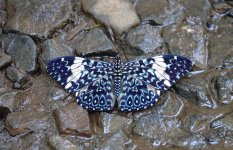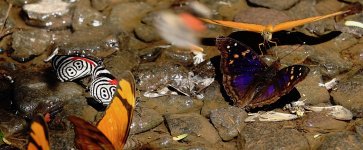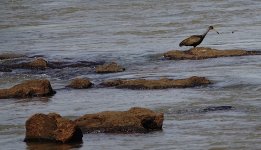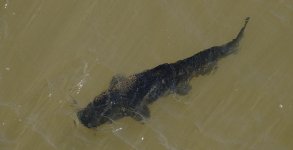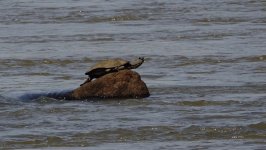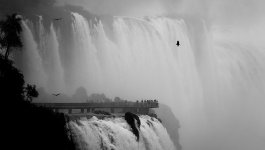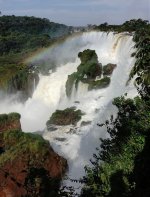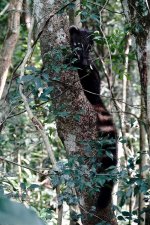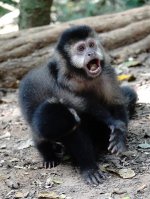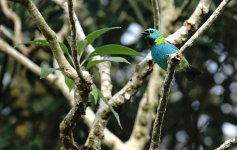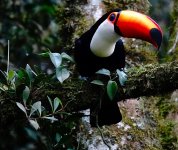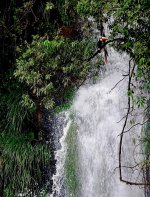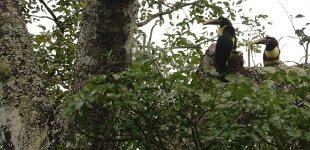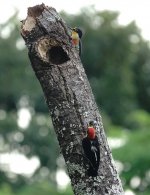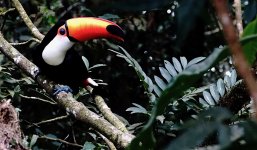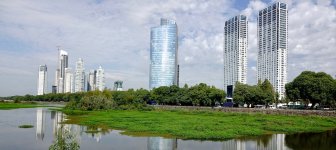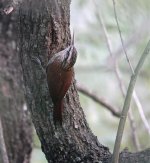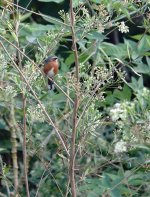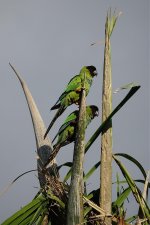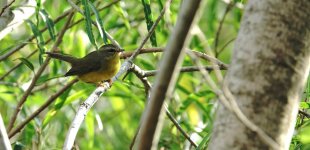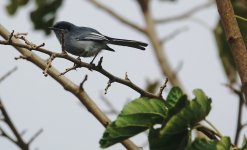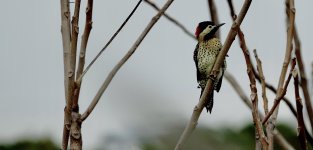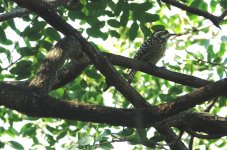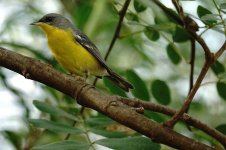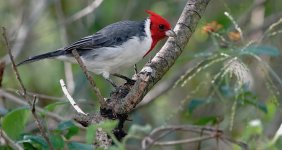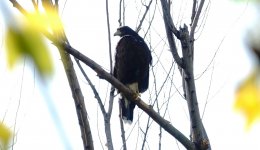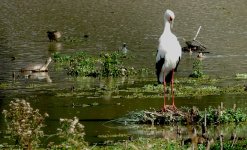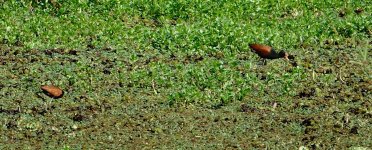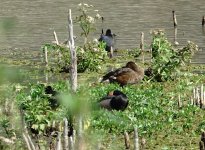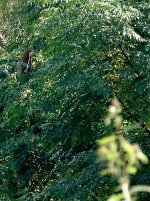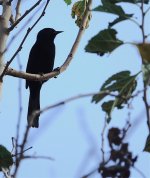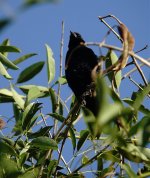MKinHK
Mike Kilburn

Our second hummingbird garden was well known enough to be on the tourist maps and Tripadvisor. Located on another quiet street in Puerto Iguazu the owners have been hanging feeders for more than 30 years and for a few dollars open their garden to visitors. Here the diversity is greater, with Scale-throated and Planalto Hummingbirds – both with long white tail streamers, but the former bronzy-green and the latter more cinnamon-tinged, the wonderfully named Black-throated Mango and the emerald and green White-throated Hummingbird and Fork-tailed Woodnymph all added to the mix. Other birds here included a couple of the tiny Ruddy Ground Doves, Shiny Cowbirds, a female Violaceous Euphonia and a Sharp-shinned Hawk on sentry duty in a nearby tree. The owner mentioned something about a different race of Versicoloured Emerald that has recently come down from Brazil. He showed me birds of both supposed races, but my Spanish was not really up to fully understanding the differences.
Cheers
Mike
Cheers
Mike
Attachments
-
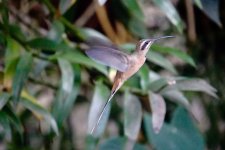 DSC00921 Planalto Hermit @Iguazu.jpg356.4 KB · Views: 51
DSC00921 Planalto Hermit @Iguazu.jpg356.4 KB · Views: 51 -
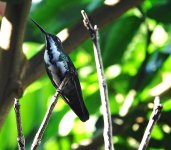 DSC00890 Black-throated Mango @ Iguazu.jpg173.4 KB · Views: 42
DSC00890 Black-throated Mango @ Iguazu.jpg173.4 KB · Views: 42 -
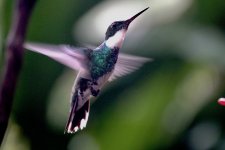 DSC00925 White-throated Hummingbird @ Iguazu.jpg314.9 KB · Views: 41
DSC00925 White-throated Hummingbird @ Iguazu.jpg314.9 KB · Views: 41 -
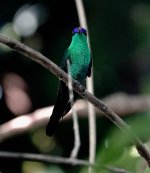 DSC00886 Violet-capped Woodstar @ Iguazu.jpg135.6 KB · Views: 41
DSC00886 Violet-capped Woodstar @ Iguazu.jpg135.6 KB · Views: 41 -
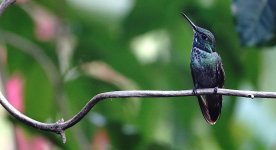 DSC00910 Versicoloured Emerald? @ Iguazu.jpg266.8 KB · Views: 46
DSC00910 Versicoloured Emerald? @ Iguazu.jpg266.8 KB · Views: 46
Last edited:




